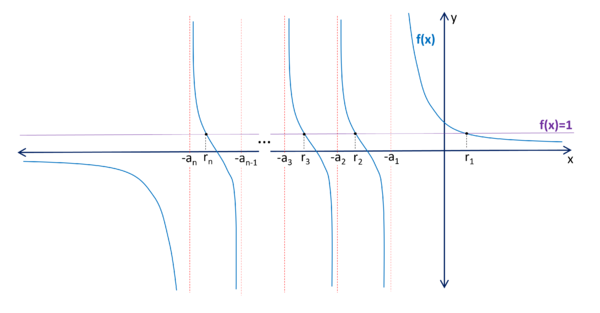Difference between revisions of "1992 OIM Problems/Problem 2"
| Line 13: | Line 13: | ||
[[File:1992_OIM_P2a.png|center|600px]] | [[File:1992_OIM_P2a.png|center|600px]] | ||
| − | Notice that the intervals will be: <math>I_1=r_1-(-a_1), I_2=r_2-(- | + | Notice that the intervals will be: <math>I_1=r_1-(-a_1), I_2=r_2-(-a_2), \cdots , I_n=r_n-(-a_n)</math> |
Thus the sum of the intervals will be: <math>\sum_{i}^{}\left( r_i+a_i \right)</math> | Thus the sum of the intervals will be: <math>\sum_{i}^{}\left( r_i+a_i \right)</math> | ||
Revision as of 11:02, 17 December 2023
Problem
Given the collection of ![]() positive real numbers
positive real numbers ![]() and the function:
and the function:
![]()
Determine the sum of the lengths of the intervals, disjoint two by two, formed by all ![]() .
.
~translated into English by Tomas Diaz. ~orders@tomasdiaz.com
Solution
Since ![]() , we can plot
, we can plot ![]() to visualize what we're looking for:
to visualize what we're looking for:
Notice that the intervals will be: ![]()
Thus the sum of the intervals will be: ![]()
- Note. I actually competed at this event in Venezuela when I was in High School representing Puerto Rico. I got a ZERO on this one because I didn't even know what was I supposed to do, nor did I know what the sum of the lengths of the intervals, disjoint two by two meant. A decade ago I finally solved it but now I don't remember how. I will attempt to solve this one later.
Alternate solutions are always welcome. If you have a different, elegant solution to this problem, please add it to this page.










